What most residential homeowners desire is a roof that will not only last a long time, but won’t cost an arm and a leg to install. Most residential roofs are replaced, or at least repaired, every ten years. By carefully choosing your residential roofing material, you can help reduce the cost of replacement or push it far into the future. In the long run, you’ll use less building material, fill up less landfill space with discarded material, and put less demand on our natural resources.
Within this site is information on the most popular types of residential roofing materials. Remember that cost alone does not determine which is best for you, and not all of these products will meet the needs of your home. By carefully selecting the right residential roofing material, making sure it’s installed properly and performing modest maintenance occasionally, there is no reason you can’t have a roof that functions properly for 25 to 50 years – or even longer.
Whether you are having a new building constructed or if your are working to renovate a current structure, knowing the different types of roofing materials will greatly help increase the effectiveness and the life of your roof.
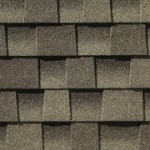 Asphalt Shingles – These are the most common type of roof materials used, and they are the most common for a reason. They are very affordable, come in a variety of colors, are durable, adapt well to almost any type of climate, and hold up for a lengthy period of time. While asphalt shingles are slightly more expensive that composite shingles, which are made of a combination of materials, they are well worth the extra investment.
Asphalt Shingles – These are the most common type of roof materials used, and they are the most common for a reason. They are very affordable, come in a variety of colors, are durable, adapt well to almost any type of climate, and hold up for a lengthy period of time. While asphalt shingles are slightly more expensive that composite shingles, which are made of a combination of materials, they are well worth the extra investment.
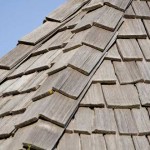 Wood Shingles – More commonly referred to as wood shakes, these look great and work well to help keep the house energy efficient, providing more insulation for the attic than most other types of roofing materials. In addition to this, they offer a wide variety of colors, sizes, textures, and width, there will never be two wood shingles roofs that are exactly the same. The issues most people face, wood shingles require a large amount of proper maintenance, sealing, rot inspections, and shingle replacement. This type of roof is also susceptible to mold, mildew, insect burrowing, and rot.
Wood Shingles – More commonly referred to as wood shakes, these look great and work well to help keep the house energy efficient, providing more insulation for the attic than most other types of roofing materials. In addition to this, they offer a wide variety of colors, sizes, textures, and width, there will never be two wood shingles roofs that are exactly the same. The issues most people face, wood shingles require a large amount of proper maintenance, sealing, rot inspections, and shingle replacement. This type of roof is also susceptible to mold, mildew, insect burrowing, and rot.
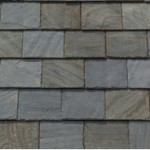 Slate Tiles or Shingles – These are a popular type of roofing material that is used in older homes. Slate offers superior protection against fire damage, they are impervious to insects and rotting, and they have a long life span. Some of the drawbacks; they are very heavy, and some roofs may need additional repairs to support the additional weight of the tiles, there are a limited number of colors (thanks to mother nature), and you can break tiles by walking on them. Slate tiles do still offer a unique and very popular look for your building, so if you can afford the upgrades to your roof along with the cost of the materials and installation, you should considering installing this type of roofing material.
Slate Tiles or Shingles – These are a popular type of roofing material that is used in older homes. Slate offers superior protection against fire damage, they are impervious to insects and rotting, and they have a long life span. Some of the drawbacks; they are very heavy, and some roofs may need additional repairs to support the additional weight of the tiles, there are a limited number of colors (thanks to mother nature), and you can break tiles by walking on them. Slate tiles do still offer a unique and very popular look for your building, so if you can afford the upgrades to your roof along with the cost of the materials and installation, you should considering installing this type of roofing material.
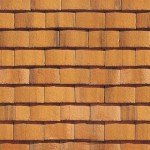 Concrete Tiles – This is popular in hotter climates, especially in the southwestern United States (Southern California, Arizona, and New Mexico). These are complex clay tiles that provide uncomparable protection for your roof home. These tiles are impervious to insects, rot, mold, fire, and even time. With one of the longest life spans of any other types of tiles you’ll see on a roof, clay tiles can stand the test of time. However, there is one key disadvantage to this type of roofing material, It’s heavy. You may need additional roof supports for existing structures.
Concrete Tiles – This is popular in hotter climates, especially in the southwestern United States (Southern California, Arizona, and New Mexico). These are complex clay tiles that provide uncomparable protection for your roof home. These tiles are impervious to insects, rot, mold, fire, and even time. With one of the longest life spans of any other types of tiles you’ll see on a roof, clay tiles can stand the test of time. However, there is one key disadvantage to this type of roofing material, It’s heavy. You may need additional roof supports for existing structures.
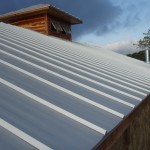 Metal – Sheet metal has been a popular roofing material for ages. It’s energy efficient, helping to reflect heat to keep the home cool. They’re durable too, being able to withstand almost anything it can be hit with. They’re also made from a large amount of recycled goods. To make it even better, they will last for an insanely long time. With the ups come the downs, and appropriate insulation will be needed in colder environments. While it does help to reflect heat, cold weather can easily freeze a metal roof. Metal roofs are also very expensive, costing more than almost every other type of roofing material since installation is best left to a professional.
Metal – Sheet metal has been a popular roofing material for ages. It’s energy efficient, helping to reflect heat to keep the home cool. They’re durable too, being able to withstand almost anything it can be hit with. They’re also made from a large amount of recycled goods. To make it even better, they will last for an insanely long time. With the ups come the downs, and appropriate insulation will be needed in colder environments. While it does help to reflect heat, cold weather can easily freeze a metal roof. Metal roofs are also very expensive, costing more than almost every other type of roofing material since installation is best left to a professional.

